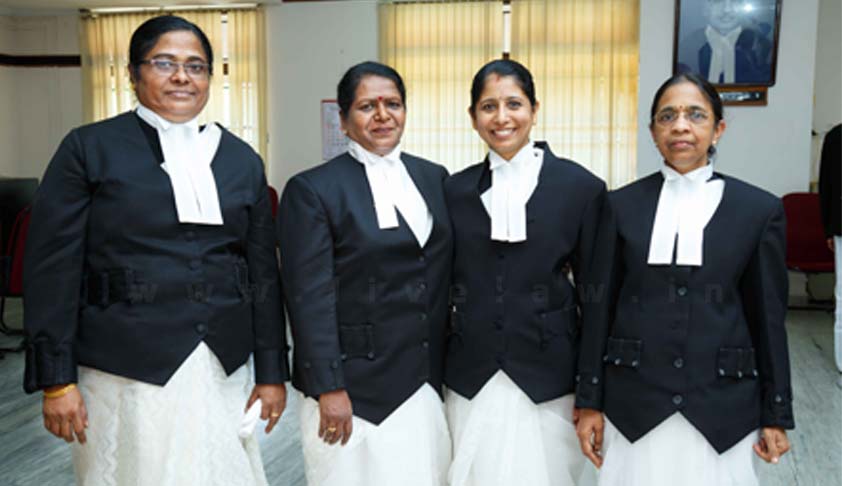Bar, Bench & Women
Namit Saxena
13 Oct 2016 2:05 PM IST
The ductile doctrine of equality before law, enshrines within itself equal protection of laws and equal treatment by state. Judiciary does, and it must, symbolise equality before law in letter, form and spirit. It must be the endeavour of the state as well as the judiciary to uphold proper and proportionate representation of all sections of the society at the bar and more so at the bench....
The ductile doctrine of equality before law, enshrines within itself equal protection of laws and equal treatment by state. Judiciary does, and it must, symbolise equality before law in letter, form and spirit. It must be the endeavour of the state as well as the judiciary to uphold proper and proportionate representation of all sections of the society at the bar and more so at the bench. With deep anguish, I have to write that women have conventionally not been treated at par with their male counterparts both at and by the Bar and the Bench. Practically & generally speaking, when a young woman, even today, wishes to practice law, the first embargo is the societal question of ‘how will you manage’. The second is the societal expectations of marriage, family and reproduction. A lot of talent we have and which we must nourish is turned off by the hopeless pseudo patriarchal system at the threshold. I know a very sharp girl from my college who works with a LPO now as she was not allowed by her family first to practice (PS – She is a third generation lawyer) and now as she is getting married, her in laws have said No. (PS – Borrowing from movie ‘Pink’, No is not a word but a sentence in itself.)So, imagine in such a scenario with a rigid filtering system, few women standing up, fighting, surviving and beating the system.
Let us sample out a very narrow section from judiciary – Women at the bench in constitutional courts. Justice Anna Chandy was the first woman in India to become a High Court Judge. She was appointed as a Munsif magistrate in Travancore in 1937, which made her the first woman Judge in India. In 1948, she was elevated to the position of a District Judge. She became the first female Judge in an Indian High Court when she was appointed to the Kerala High Court in February 1959. Justice M. Fathima Beevi was the first woman appointed as a Judge in the Supreme Court. Not just in India, she was the first asian woman to become a Supreme Court Judge and the first Muslim woman to be appointed to any higher judiciary.
Statistically speaking, currently, India has 24 High Courts and 1 Supreme Court. The sanctioned strength of judges in the Supreme Court is 31 and that in High Court comes to a total of 1079. But we have only one woman Supreme Court judge and only 61 female judges in total, out of which there are two Chief Justices of High Courts. On the other hand, there are 25 male judges in the Supreme Court and 611 male judges at the High Courts. There are 8 High Courts which do not have any female judge at all. Furthermore, the Supreme Court has in fact seen only 6 elevations till date of woman judges.
The first step, subject to my limits of comprehension is to have proper awareness as to why we need proportionate representation for women at the bench, which is followed with correct factual reporting and then thorough steps in this direction.When facts are not properly reported and are simply twisted and turned, it directly goes into the root of the matter and hurts the cause.
Looking at the bar, again, the number of designated female senior advocates is very less and can be counted on fingers. More so, the number of young female advocates is equally less and they are regularly told by their peers to prepare for judicial services instead of shuttling across courtrooms to fight a case. The other lot, who survive, is being repeatedly told of their dependence on a male counterpart; be it spouse, or a friend or family. The way women are discouraged to enter our ‘noble’ profession is nothing compared to the circumstances under which they exist and survive at bar. Ranging from a normal taunt to re-reminding societal expectations and to channelized character assassination, women are forced to live like second class citizens in the world they have produced. Both bar and the bench, equally are responsible and equally guilty for the situation which prevails today. I have seen women of extra ordinary talents, denied and declining opportunities only because of gender biases. I do not moot that to maintain a balance, non competent people of any gender be promoted at the bar or even more at the bench. I also do not decline knowledge of biographical difficulties. What I avert is that the cruel gender discrimination against women must end; an individual irrespective of his/her gender must not choose or decline any profession which he/she finds interest in because of societal pressure especially that of joining the bar and continuing it to represent a case and argue it with full zeal. Social taboos of the after marriage syndrome, competitive services for women, settled govt. job theories, family expectations etc etc etc must end. When women of high calibre are appointed at the bench, not only the movement of accepting women at bar gains momentum but fresh talent is also encouraged to come and fight for a cause.It must begin, now. Revolutions can, and often have begin with reading. Fingers crossed!
 Namit Saxena is an Advocate in Supreme Court of India.
Namit Saxena is an Advocate in Supreme Court of India.


